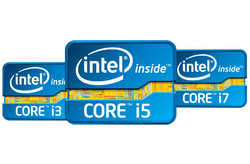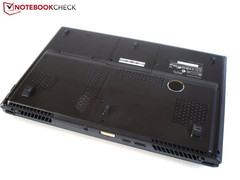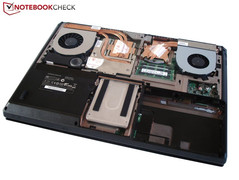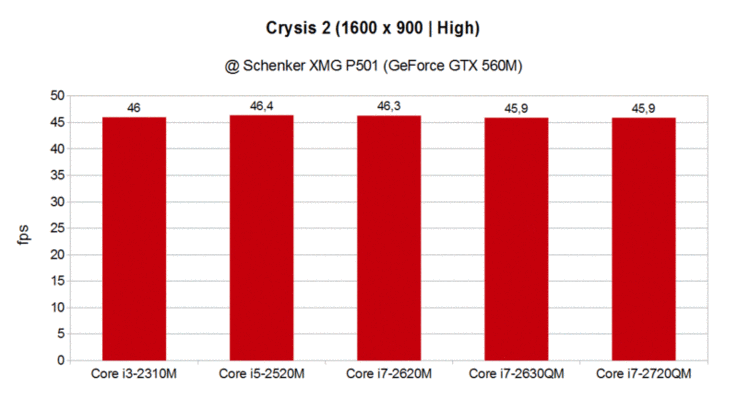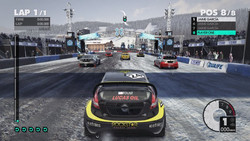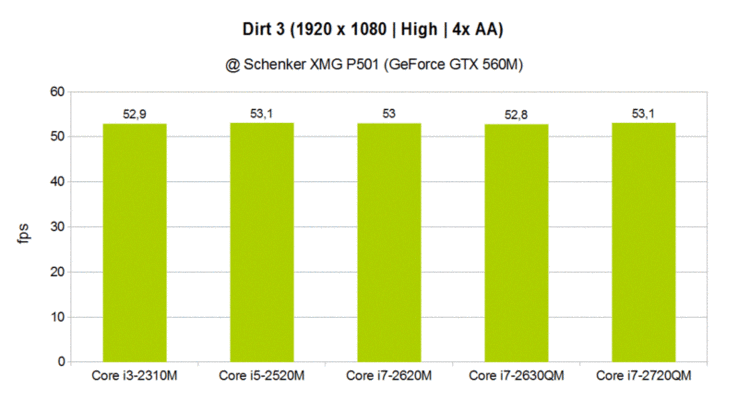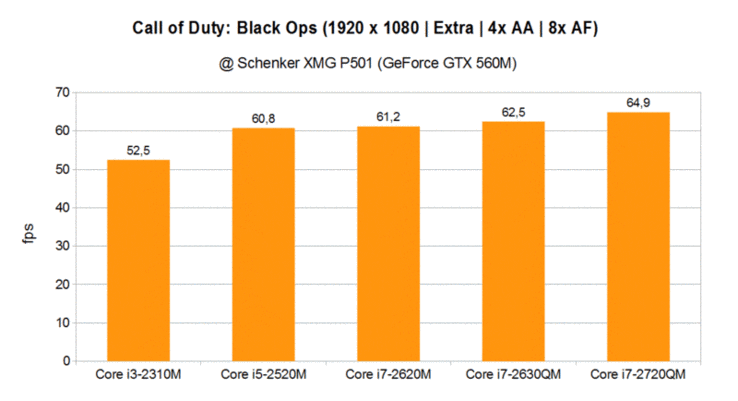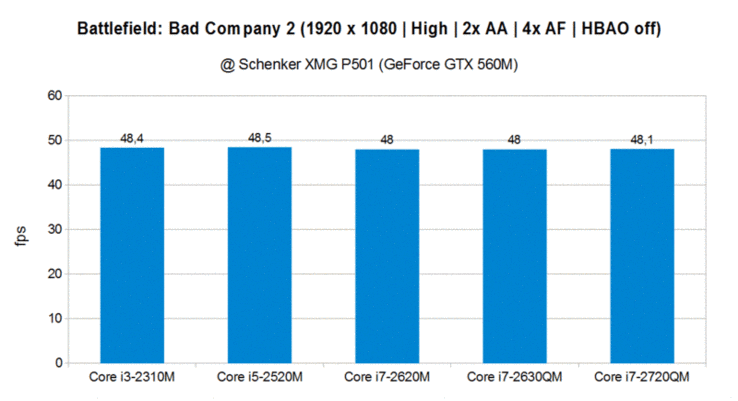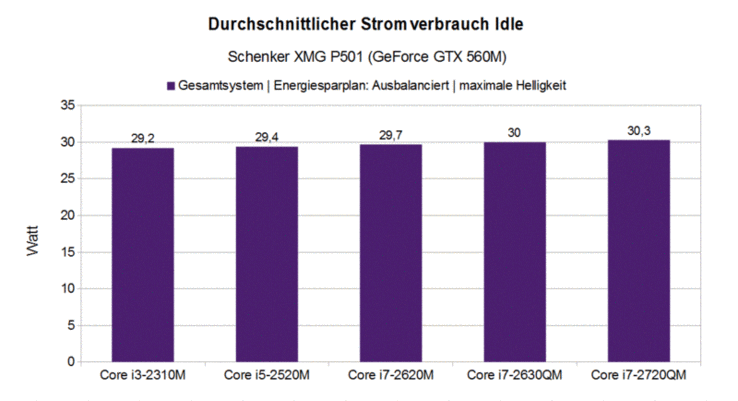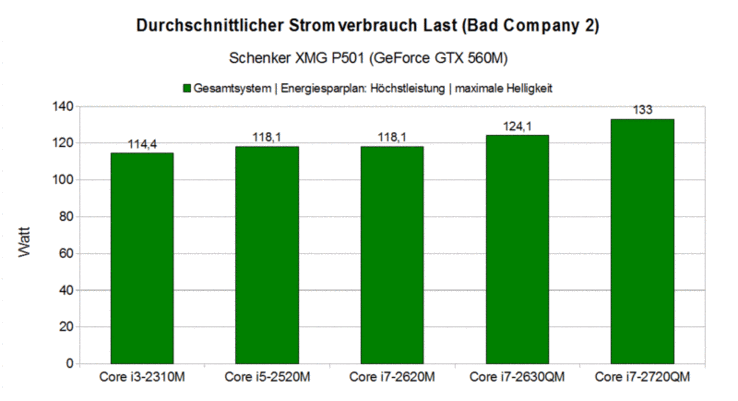Intel Sandy Bridge Processors Gaming Performance: Part II
Following our previous comparison of Intel Sandy Bridge processors (see review) we see that quad-core CPUs don't really improve gaming performance—at least when combined with a mid-grade graphics card. But what about high-end graphics cards? Does the processor make its mark or is the graphics card still the sole deciding factor for gaming performance? That's what we aim to find out.
The test machine for our comparison was the P150HM Barebone from Clevo, whose compatibility with various hardware was perfect for our purposes. We'd like to heartily thank Schenker for supplying us with an XMG P501 laptop (based on P150HM) and five Sandy Bridge CPUs for our tests. The notebook was equipped with 8 GB DDR3-RAM, an 80 GB SSD and a 750 GB HDD as well as Nvidia's brand new GeForce GTX 560M, a high-end GPU with support for DirectX 11 (driver: ForceWare 267.78). Windows 7 Home Premium 64 Bit was the operating system here.
The testing procedure here is, for the most part, the same as in "part I" of our Sandy Bridge gaming performance comparison. That is, we played 4 games on each of the five CPUs and measured the refresh rates in each case. In choosing the graphics settings, we strived to forge a good balance between a nice-looking, detailed picture and a smooth frame rate. In case you were wondering why the supposedly more powerful processors sometimes perform worse than their weaker counterparts, keep in mind that a difference of +1/-1 fps is normal—the refresh rate tends to fluctuate slightly from one trial to the next.
Laptop Configuration:
- Windows 7 Home Premium 64 Bit
- Intel HM65 chipset
- Nvidia GeForce GTX 560M (1536 MB GDDR5-VRAM)
- 15.6" Full-HD LED Display (Glare)
- 8 GB DDR3-RAM (1333 MHz)
- Intel SSDSA2CW080G3 (80 GB)
- Seagate ST9750420AS (750 GB, 7200 RPM)
- Starting Price: 979 Euro (price depends on configuration)
Processors Used:
- Core i3-2310M, 2 cores, 4 threads, 2.1 GHz, 3 MByte L3-Cache, 35 watt
- Core i5-2520M, 2 cores, 4 threads, 2.5 - 3.2 GHz, 3 MByte L3-Cache, 35 watt
- Core i7-2620M, 2 cores, 4 threads, 2.7 - 3.4 GHz, 4 MByte L3-Cache, 35 watt
- Core i7-2630QM, 4 cores, 8 threads, 2.0 - 2.9 GHz, 6 MByte L3-Cache, 45 watt
- Core i7-2720QM, 4 cores, 8 threads, 2.2 - 3.3 GHz, 6 MByte L3-Cache, 45 watt
Links:
Crysis 2
The resource-demanding first-person shooter, Crysis 2 (version 1.4, no DirectX 11), pushes even the most powerful mobile GPUs to the brink when played with high detail settings. Since Nvidia's GeForce GTX 560M can sometimes be overwhelmed with "high" graphics presets in a full-HD resolution, we switched over to 1600 x 900 pixels. We ran the opening sequence of the game (submarine) for about a minute and used the tool "Fraps" to measure the refresh rate.
The results show that processing the game is very graphics-intensive. The difference in performance between the cheapest and most expensive CPUs came to a mere 0.5 fps. Even the 2.10 GHz clock-rated Core i3-2310M (no turbo) is enough to produce a smooth frame rate.
Dirt 3
In the graphically stunning racer, Dirt 3, the situation looks similar. The in-game benchmark was run with high detail settings, 4x antialiasing and a resolution of 1920 x 1080 and produced a cumulative average of 53 fps for all the processors tested. This refresh rate produces a picture that never looks choppy. Like with Crysis 2, the graphics card is overwhelmingly the deciding factor, making the choice of CPU rather unimportant.
Call of Duty: Black Ops
The popular Call of Duty offshoot, Black Ops, was the only game for which the processor played a considerable role in game performance. While the Core i5 and Core i7 CPUs achieved an average 60 fps, the Core i3-2310M only managed 53 fps. The lack of a turbo function in the i3 might be the culprit here.
The two dual-core CPUs, meanwhile, rank in at the top of the list. The Core i7-2720QM still outperformed the Core i5-2520M by 4 fps. This difference is, however, unnoticeable to the naked eye in this case. The benchmark sequence here was the three-minute-long firefight in the streets of Havana that starts off the game. 1920 x 1080 pixels, 4x antialiasing, 8x anisotropic filtering and "Extra" details didn't make the GeForce GTX 560M even break a sweat.
Battlefield: Bad Company 2
As long as you forgo HBAO (Horizon-Based Ambient Occlusion), this ever-popular first-person shooter runs just fine with 2x AA, 4x AF in a resolution of 1920 x 1080. The boat ride at the beginning of the game was run at just about the same refresh rate by all the processors (app. 48 fps). Although Bad Company 2 can supposedly profit from a third or fourth core according to various sources, the game's performance was definitely controlled by the graphics card in our tests.
Power Consumption Idle
In accordance with popular demand we've measured the power consumption of the notebook. The following values represent the energy consumed not just by the processor alone but rather by the system as a whole. For measuring the power gobbled up by the laptop while idle, we set the performance profile (energy saver) to "balanced", turned screen brightness all the way up and wifi off.
The power consumption levels did, of course, fluctuate a bit, but the values shown below were the ones most often displayed by our measuring device (Voltcraft VC940). While the laptop was idle, the power consumption among the five processors varied by a very narrow margin of one single watt. This says quite a bit for the well-configured energy-saving mechanisms of Sandy Bridge CPUs.
Power Consumption under Heavy Use
To get a realistic reading of power consumption under heavy use, we measured the energy used up while running Bad Company 2. The screen brightness was set to max and the WiFi activated. The "high performance" profile was in place.
Compared to the values in idle mode, the wattage here varied much more among the processors. While the XMG P501 with Core i3-2310M ate up 114 watts, the notebook equipped with Core i7-2720QM used up an average of 133 watts—just about a 20-watt difference. All in all, the choice of processor doesn't affect the power consumption a great deal.
Verdict
This second look at Intel Sandy Bridge processors' gaming performance leads us to just about the same conclusion as last time. As far as laptops go, the number of processor cores (holding clock rate constant) plays a minimal role in determining how smoothly games will run—the graphics card is the deciding factor here. In three of the four games tested, the processor made no considerable difference in the frame rate measured. Whether dual-core or quad-core, high clock-rated or low clock-rated: the minimum fps, maximum fps and average fps figures came out just about the same for all the processors.
Only in Call of Duty: Black Ops did the choice of processor make an impact on the frame rate. With the exception of the Core i3-2310M, even here the difference in performance was minimal. So that your laptop's well equipped for the future, we'd nevertheless recommend getting a quad-core processor such as the Intel Core i7-2630QM, which has a decent price-to-performance ratio. It's possible that in the future more games will behave like Black Ops and you're definitely on the safe side with a quad-core CPU.


 Deutsch
Deutsch English
English Español
Español Français
Français Italiano
Italiano Nederlands
Nederlands Polski
Polski Português
Português Русский
Русский Türkçe
Türkçe Svenska
Svenska Chinese
Chinese Magyar
Magyar